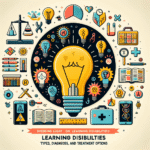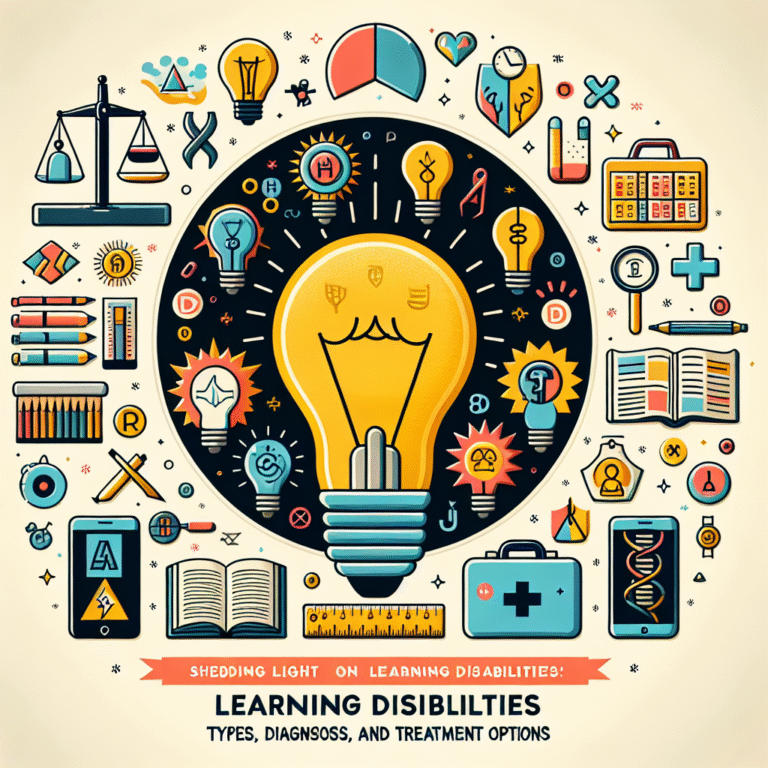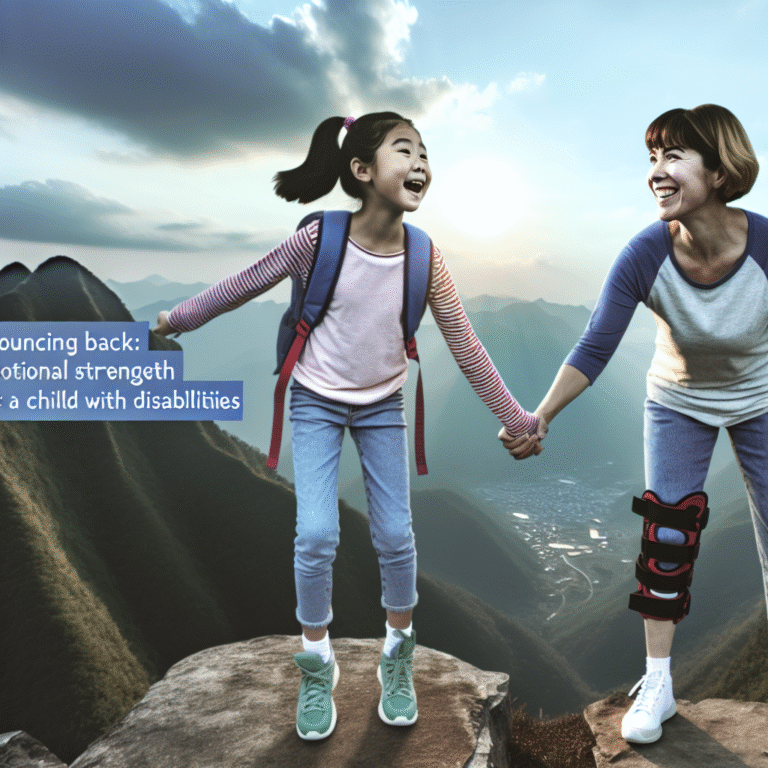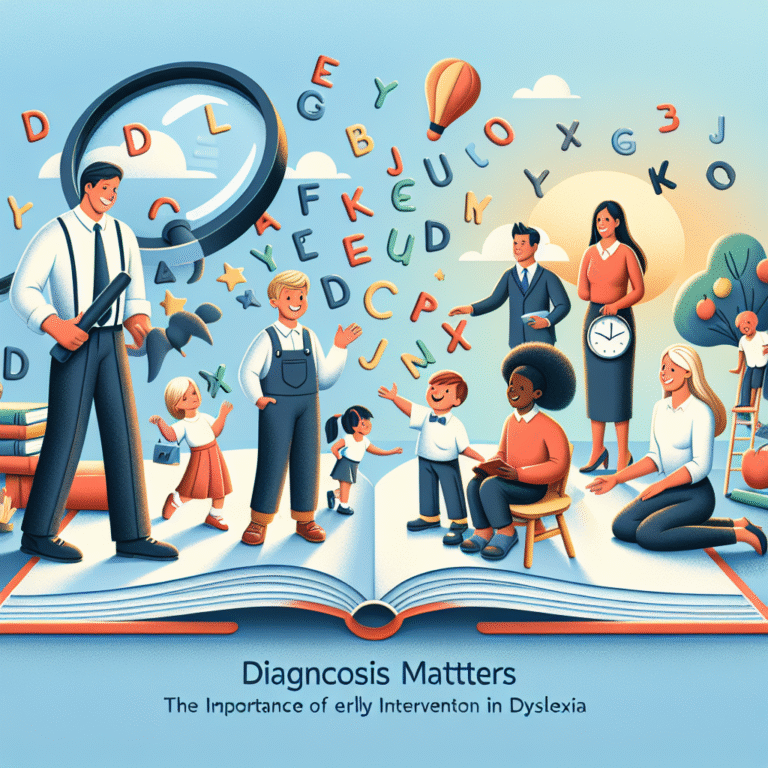
Beyond the Label: Recognizing the Signs of Learning Disabilities and Related Behavior Challenges
Introduction
Imagine a classroom filled with eager minds, each unique in their learning journey. Yet, behind the smiles of some children, there may lie invisible struggles that can profoundly affect their educational experience and overall wellbeing. As society progressively becomes more aware of mental health and learning differences, understanding the signs of learning disabilities and related behavior challenges is imperative. Beyond the Label: Recognizing the Signs of Learning Disabilities and Related Behavior Challenges invites us to delve deeper into this nuanced topic, moving past mere diagnoses to better understand the behaviors, emotions, and needs of affected children.
This article will not only elucidate the signs and symptoms of various learning disabilities but will also incorporate real-world case studies and practical strategies to advocate for these learners effectively. By fostering awareness and empathy, we can help these children flourish in their educational and social environments.
Understanding Learning Disabilities
What Are Learning Disabilities?
Learning disabilities (LD) are neurological disorders that can impede an individual’s ability to process, understand, or respond to information. These challenges often manifest in reading, writing, mathematics, or organizational skills, forming a spectrum of conditions that can affect students in various ways.
Some common types of learning disabilities include:
- Dyslexia: Difficulty with reading, spelling, and writing.
- Dyscalculia: Difficulty understanding numbers and mathematical concepts.
- Dysgraphia: Difficulty with writing expression and fine motor skills.
- Nonverbal Learning Disabilities: Issues with nonverbal cues, such as body language and spatial awareness.
Recognizing these disabilities is the first step in Beyond the Label: Recognizing the Signs of Learning Disabilities and Related Behavior Challenges. Identifying the signs can lead to timely intervention and support.
The Spectrum of Learning Disabilities and Behavioral Challenges
Learning disabilities often coexist with emotional and behavioral challenges, making it crucial to recognize these signs as well. Signs of underlying issues may present themselves as frustration, anxiety, or withdrawal. Understanding the interplay between learning disabilities and behavior can enhance our ability to support these individuals.
Case Study 1: The Struggles of Alex
Consider Alex, a bright third grader who loves science but struggles to keep up with reading assignments. He often appears frustrated during group activities, and teachers note that he avoids reading aloud. However, with targeted support focusing on his learning disability and the resultant behavior—his frustration and social withdrawal—Alex began to thrive. Through a tailored educational plan, he received tools to boost his reading while also learning coping strategies to manage anxiety in class.
Recognizing the Signs
It’s essential to recognize that the signs of learning disabilities are often subtle. Here are some critical indicators:
Academic Signs
- Frequent spelling errors
- Inconsistent handwriting
- Difficulty following instructions
- Trouble organizing thoughts in writing
Behavioral Signs
- Increased frustration during tasks
- Avoidance of specific subjects or tasks
- Outbursts or behavioral challenges in group settings
- Signs of anxiety or withdrawal in social situations
Chart 1: Statistical Overview of Learning Disabilities
| Type of Learning Disability | Prevalence in Children (Percentage) |
|---|---|
| Dyslexia | 5-10% |
| Dyscalculia | 3-6% |
| Dysgraphia | 5-10% |
Strategies for Identification
Collaborating with Educators
Educators play a vital role in identifying learning disabilities. Through constant observation and assessment, teachers can pinpoint academic difficulties and associated behavioral challenges. Regular communication between parents and teachers can foster a supportive environment where struggles are openly discussed and assessed.
Consultation with Specialists
Consulting with educational psychologists can provide deeper insights into disability assessment. Specialists can apply formal assessments to identify specific learning disabilities and associated behavior issues. This structured approach is key to Beyond the Label: Recognizing the Signs of Learning Disabilities and Related Behavior Challenges.
Intervention Techniques
Individual Education Plans (IEPs)
Creating an Individual Education Plan (IEP) is one of the most effective ways for children with learning disabilities to receive tailored support. IEPs set achievable goals, outline specific services needed, and provide a roadmap for parents and educators working together.
Creating a Supportive Home Environment
Providing children with a structured home environment is crucial. Here are some needs to consider:
- Routine: A daily schedule can offer predictability.
- Quiet Time: Designating a quiet space for homework can help minimize distractions.
- Positive Reinforcement: Using encouragement and celebrating small victories fosters motivation and resilience.
Case Study 2: Emma’s Journey
Emma, a fifth grader with dyslexia, struggled significantly with reading comprehension, leading to avoidance behaviors in school. Her parents collaborated with her teachers to create an IEP. Through specialized tutoring and consistent communication, Emma developed personalized strategies that allowed her to engage with reading differently, including using audiobooks and visual aids. Over time, Emma not only improved her reading skills but also gained confidence in her capabilities, illustrating the importance of Beyond the Label: Recognizing the Signs of Learning Disabilities and Related Behavior Challenges.
Providing Emotional Support
Emotional support plays a vital role in the lives of children with learning disabilities. Many experience feelings of inadequacy or frustration, making supportive relationships essential. Actions parents and educators can take include:
- Talking openly about feelings
- Practicing mindfulness techniques
- Encouraging peer support groups for shared experiences
The Role of Advocacy
Parent and Teacher Advocacy
Advocacy for children with learning disabilities is a collective effort encompassing parents, teachers, and community members. Understanding children’s rights within educational settings can significantly alter their experience. Here are actionable steps:
- Knowledge is Powerful: Researching and understanding educational rights helps navigate discussions with school systems.
- Networking: Connecting with other parents can provide support and share useful resources.
- Participation: Actively participating in meetings with educators ensures that children’s needs are addressed.
Community Involvement
Community resources can also facilitate stronger support systems. Look for local organizations focused on educational support, advocacy groups, and community centers providing services for learning disabilities. Collaborative engagements can foster comprehensive support structures for children and families navigating these challenges.
Conclusion
In conclusion, understanding learning disabilities—Beyond the Label: Recognizing the Signs of Learning Disabilities and Related Behavior Challenges—is a crucial step towards fostering an inclusive and supportive educational environment. By recognizing the signs, implementing effective interventions, and advocating for children, we can facilitate positive changes in their lives. The case studies of Alex and Emma illustrate that with the right support and understanding, children with learning disabilities can overcome hurdles and thrive academically and socially.
Compassion, awareness, and proactive steps can make a significant difference. As we work together to recognize and address these challenges, we open the doors to success for every child.
FAQs Section
1. What is the difference between learning disabilities and difficulties?
Learning disabilities are neurological disorders that affect specific areas of learning, while learning difficulties can refer to broader challenges that may not necessarily stem from a neurological basis.
2. How can I support a child with learning disabilities at home?
Creating a structured environment, providing emotional support, and integrating learning strategies that resonate with the child’s strengths can all foster improvement.
3. Is it possible for children with learning disabilities to succeed academically?
Absolutely! With the right supports in place, children can develop coping strategies and achieve academic success tailored to their individual needs.
4. Can learning disabilities be outgrown?
While some children may learn to cope or manage their disabilities better, learning disabilities are often lifelong conditions. Continuous support is critical.
5. How do I initiate a conversation with teachers about concerns?
Approach your child’s teacher with specific observations and a collaborative mindset. Focus on observed behaviors and academic performance rather than labeling the child to promote a constructive dialogue.
By providing insights into learning disabilities, we not only advocate for those affected but also open the path for deeper understanding and compassion in our communities. Let us embrace this journey Beyond the Label—where every child can shine in their own light.









